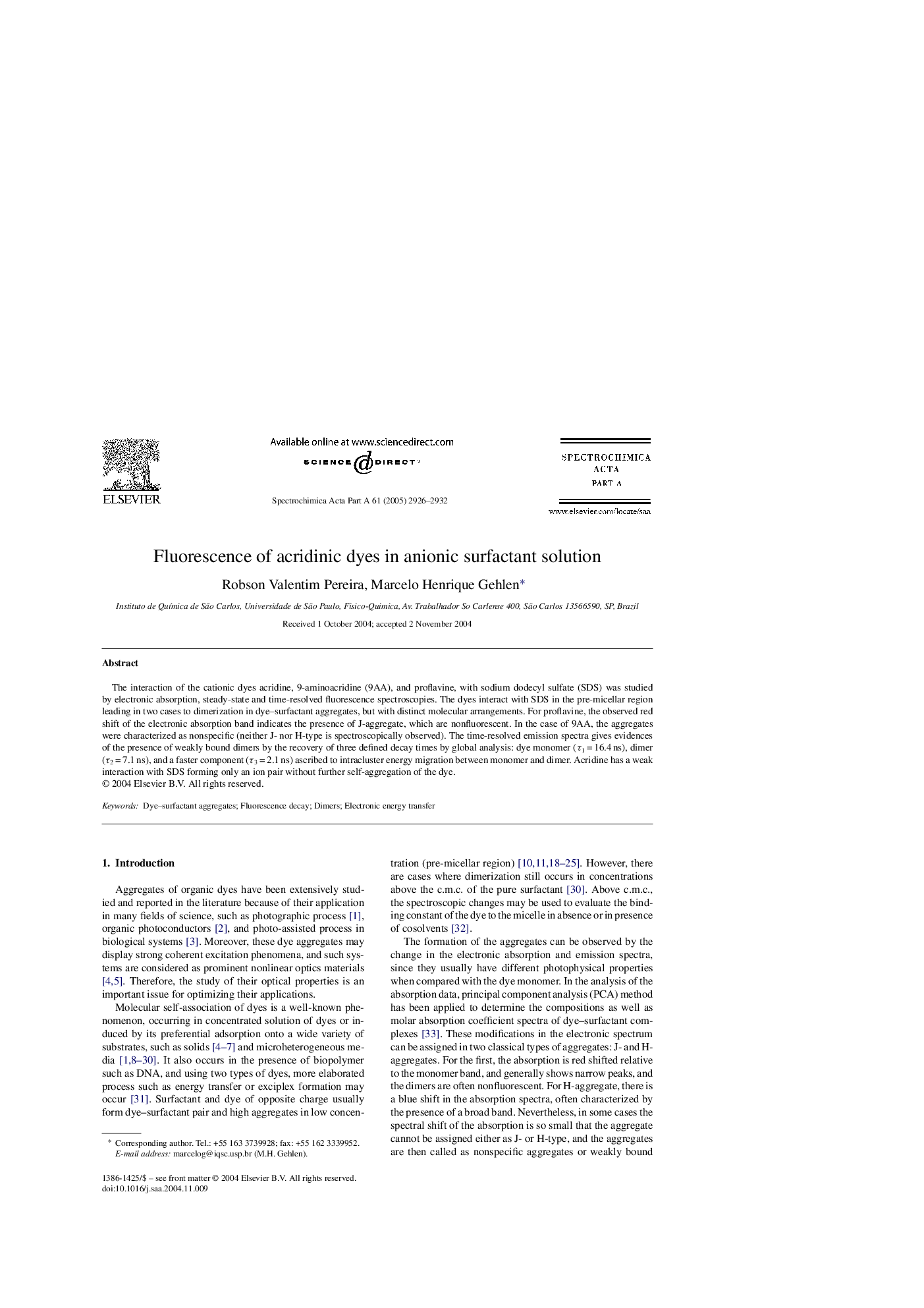| Article ID | Journal | Published Year | Pages | File Type |
|---|---|---|---|---|
| 1236988 | Spectrochimica Acta Part A: Molecular and Biomolecular Spectroscopy | 2005 | 7 Pages |
The interaction of the cationic dyes acridine, 9-aminoacridine (9AA), and proflavine, with sodium dodecyl sulfate (SDS) was studied by electronic absorption, steady-state and time-resolved fluorescence spectroscopies. The dyes interact with SDS in the pre-micellar region leading in two cases to dimerization in dye–surfactant aggregates, but with distinct molecular arrangements. For proflavine, the observed red shift of the electronic absorption band indicates the presence of J-aggregate, which are nonfluorescent. In the case of 9AA, the aggregates were characterized as nonspecific (neither J- nor H-type is spectroscopically observed). The time-resolved emission spectra gives evidences of the presence of weakly bound dimers by the recovery of three defined decay times by global analysis: dye monomer (τ1 = 16.4 ns), dimer (τ2 = 7.1 ns), and a faster component (τ3 = 2.1 ns) ascribed to intracluster energy migration between monomer and dimer. Acridine has a weak interaction with SDS forming only an ion pair without further self-aggregation of the dye.
